Recently updated on May 8th, 2025 at 04:55 am
It’s one of Earth’s last true remaining wilderness areas – and a cruise along Alaska’s rugged coasts is an immersion in its wildest heart. Whether you’re exploring aboard a small expedition ship or enjoying the extensive amenities of a larger liner, cruising Alaska is all about connecting with grand-scale nature. You can expect extraordinary wildlife sightings, welcoming communities, picturesque fjords, towering peaks and to marvel at some of its 100,000-plus glaciers; and, depending on when you travel, either stellar views of the Northern Lights or every outdoor adventure under the midnight sun. Here, we take the guesswork out of when to set sail on your ultimate Alaska cruise adventure.
Table of Contents
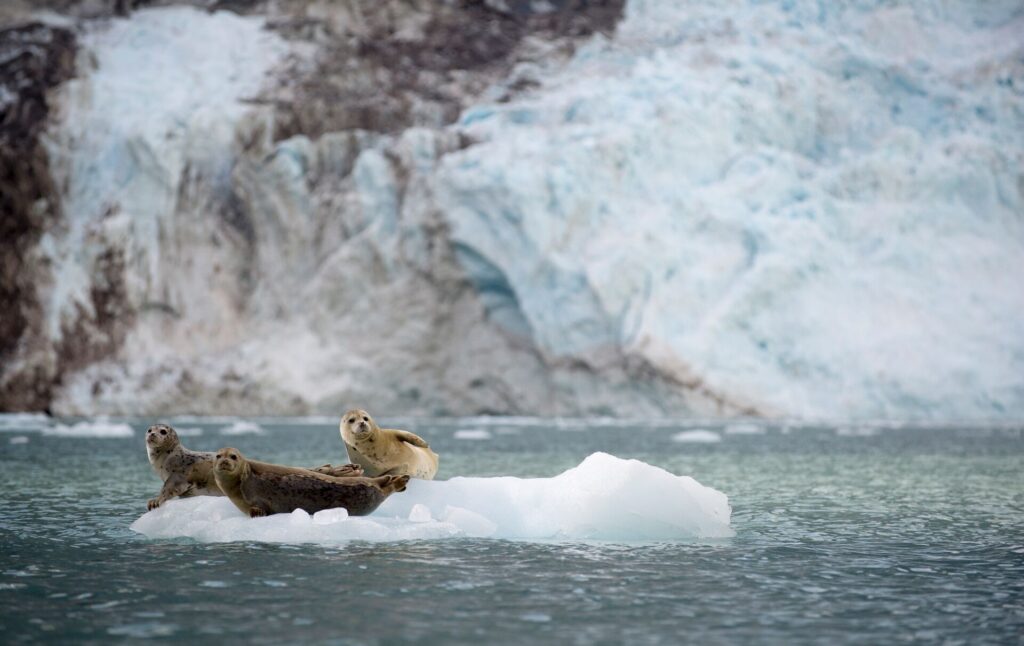

Where exactly do Alaska cruises go?
Known as The Last Frontier and boasting more coastline than the rest of the United States combined, Alaska is remote, vast and largely uninhabited. And while much of it is difficult to access from land, cruising brings access to secluded areas that’d otherwise be impossible to reach. Get your bearings with this map of Alaska.
For the most part, Alaska cruises cover three main areas. Firstly, there’s the Inside Passage route, which departs from Seattle or Vancouver and passes through a network of protected waterways and fjords. It generally calls in at Juneau, Ketchikan, Skagway, and Glacier Bay (and sometimes, Icy Strait Point or Sitka), and offers excellent opportunities for seeing whales and coastal wildlife. Then there are northbound or southbound journeys in the Gulf of Alaska, which links to the Inside Passage but covers more territory, with cruises visiting Glacier Bay, Anchorage, Seward, Kenai Fjords National Park and Whittier. It’s an excellent choice for glacier spotting, bear watching and for access to Mount Denali, which, at 6,190m, is North America’s highest peak. And, thirdly, there’s the Arctic and Bering Sea route that combines with Northwest Passage expeditions. It ventures deep into the frosty far north from Anchorage, often includes stops at Barrow/Utqiaġvik, Nome, the Pribilof Islands and the Aleutians, and is excellent for First Nations cultural experiences and polar bear watching.
Explore World Heritage Glacier Bay and beyond for 7 extraordinary nights.
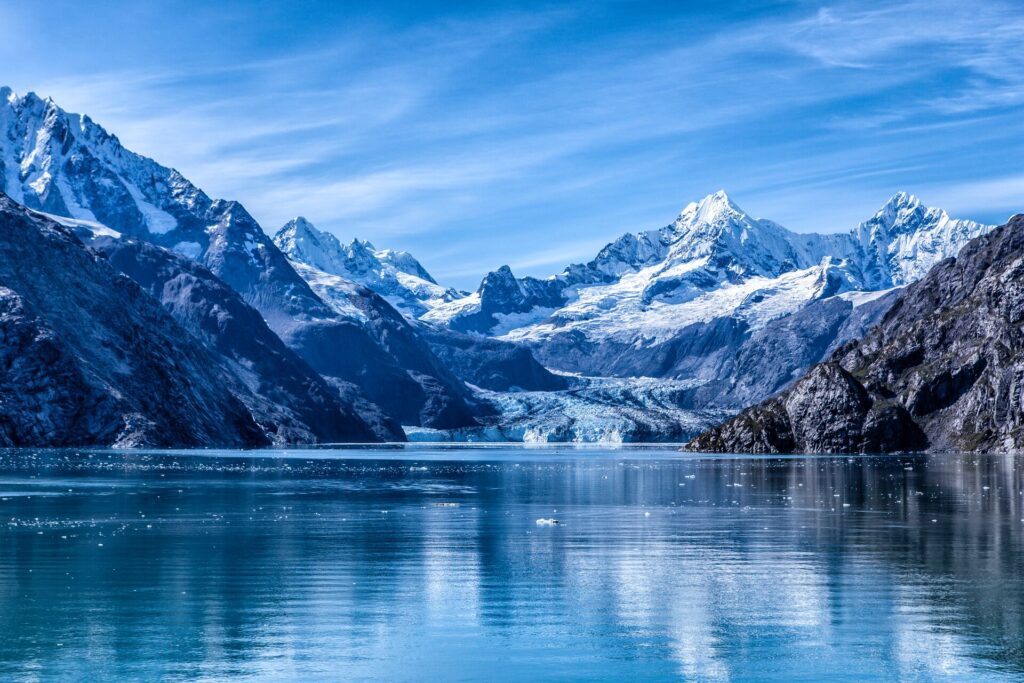

An overview of the Alaska Cruise Season
The Alaska cruise season in general runs from May to September. For the most part, cruise companies kick off sometime in April or early May, then finish up in late September or early October. The peak of the season occurs in June, July and to a lesser extent August, when the northern summer’s temperatures peak and wildlife is most active.
Peak versus shoulder season – the pros and cons
From June to August, the season is at its peak – bringing warmer weather, maximum daylight, excellent wildlife sightings – and cruise prices, traffic and visitor numbers are accordingly at their highest. In the shoulder months of April/May and September/October, the weather can be cooler and less predictable, but there are fewer visitors, lower prices and the landscapes are in transition, with May being the end of spring and September the beginning of autumn.
Average weather and temperature by month
According to the Alaska Climate Research Center and the National Weather Service, temperatures and weather conditions vary significantly between April and October.
- April: Spring temperatures range from -3°C to 9°C in many areas, snow is still common, and you can expect 40-50mm of rain.
- May: The days slowly get warmer and longer: the snow starts to melt, temperatures rise to 2°C-14°C, and there’s around 50-60mm of rain.
- June: Summer begins, and temperatures reach 7°C- 18°C, with rainfall averaging 50-70mm.
- July: The warmest month, with temperatures hitting 12°C-20°C and rainfall averaging at 70-90mm along the coast.
- August: Temperatures cool slightly to 11°C- 18°C, with rainfall reaching 80-100mm.
- September: Autumn’s cool temperatures range between 4°C- 13°C, rain increases to 80-120mm, and there’s a greater chance of snow.
- October: Winter approaches, with temperatures ranging from -1°C to 7°C, and rainfall around 60-90 mm.
Experience the best of cruising and bear watching on an exclusive charter carrying just 8 guests.
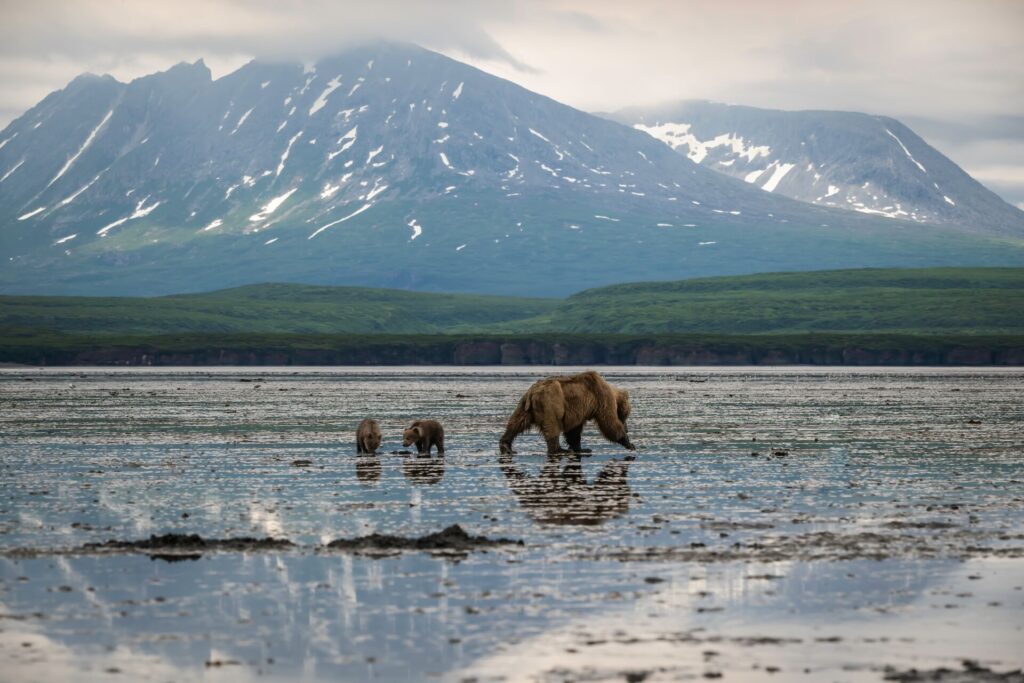

The best times to cruise Alaska for different priorities
The most suitable month for you depends on the highlights you’re aiming for; get started with this breakdown:
Your cruising priorities by month
| Your priority | April | May | June | July | Aug | Sept |
| Budget-friendly cruises | x | x | x | |||
| Wildlife viewing | x | x | x | x | x | x |
| Whale watching | x | x | x | |||
| Northern lights | x | x | ||||
| Family experiences | x | x | x | |||
| Avoiding the crowds | x | x | x | |||
| Photography | x | x | x | x | ||
| Maximum daylight | x | x |
- The cheapest time to cruise Alaska is in the shoulder months at the beginning and end of the season. The days are cooler, the weather’s a little unpredictable, and there may be less excursions available, but there are fewer crowds. Plus, in September as the season winds down, many cruise lines offer last-minute discounts.
- The best time for wildlife viewing depends on the animals you want to see, but you can catch animal antics all season. May is great for migratory birds and black bears, as they awaken from their hibernation. June is excellent for brown bears foraging on the coastline, while seals, sea lions, moose and caribou may also be sighted. In July and August, bears are at their most active as the salmon run peaks, and there are great chances to see sea birds, moose, caribou, and, if you’re very lucky, wolves. By September, bears are still foraging and feasting ahead of their impending hibernation.
- The best time for whale watching is generally June, July, and August, when the nutrient rich waters bring humpbacks, orcas, gray whales and minkes to the area to feed ahead of their winter migration.
- The best time to see the Northern Lights is September to March, as this coincides with Alaska’s long dark nights. If you are very lucky, you may see them in the shoulder season in areas like Fairbanks, Barrow/Utqiaġvik, Denali or Nome, but in summer it is less likely, with up 16-22 hours of daylight in areas like Juneau, Ketchikan, and Anchorage (between April and August).
- The best time for families is during the season’s peak, namely June, July, and August, with the greatest number of shore excursions, the longest daylight hours and the warmest weather.
- The best time to avoid crowds is during the shoulder season, when the weather may be a little less predictable and temperatures are cooler.
- The best time for photography is mid-June to mid-September, when there’s long daylight hours, vividly coloured landscapes, prolonged golden light, stable weather and abundant wildlife.
- The best time for maximum daylight is mid-June to mid-July, when daylight lasts up to18-19 hours in the southern regions (and is even longer in the north). And if you find yourself in Anchorage around June 20, don’t miss the annual Summer Solstice Festival, when the city celebrates 22 hours of daylight.
This stellar small-ship voyage through the Alaskan fjords also explores by kayak, paddle-board and skiff.
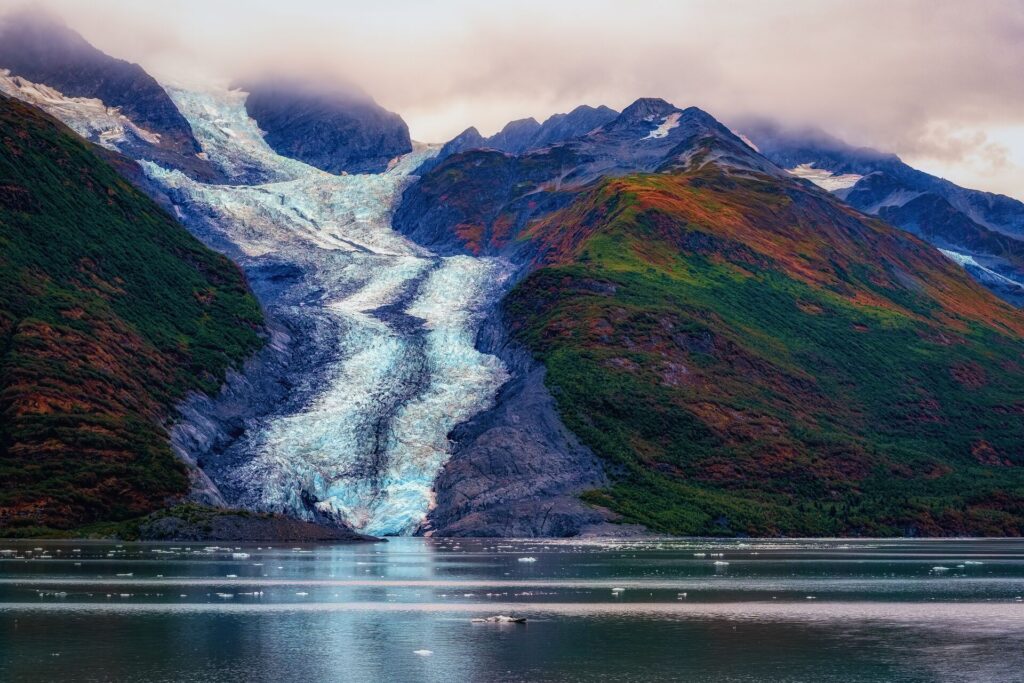

The Alaska cruise experience by month
Here’s what to expect at various points in the season:
April – shoulder season, lowest prices, less crowds
While the temperatures are cool and snow is still possible, bears slowly emerge from hibernation, migratory birds and whales start appearing, and with so few visitors, it may feel like you have Alaska all to yourself. Daylight starts to increase to up to 14-16 hours, but as it’s still very early in the season some outdoor activities and shore excursions won’t be available.
May – spring blooms and budget-friendly cruises
Although still brisk and peaceful, signs of spring begin to appear, with up to 16-18 hours of daylight and increasingly active wildlife. Coastal cities like Ketchikan and Juneau might see rain, and the mountains may still receive snow. While some excursions are still quite limited, sightseeing tours are well underway.
June – longest days, great for wildlife and outdoor activities
June’s mild temperatures make it one of the most comfortable times to visit, and while rain is still possible, with 18-19 hours of daylight, there’s ample time for outdoor activities like glacier hikes, kayaking, bushwalking and wildlife viewing.
July – peak season, best for warm weather and wildlife
July is warm and sunny, with minimal rain and extended daylight. There’s also a lot more animals around; in fact, July is known as the best season for wildlife. It’s peak feeding season for grizzly and black bears, particularly in Katmai and Denali National Parks. It’s also the best time for whales, with humpbacks and gray whales especially abundant around Juneau and Icy Strait. The range of shore excursions and outdoor activities are at their most expansive too (but may sell out due to demand) and is headlined by glacier tours of Glacier Bay National Park, Kenai Fjords, and Tracy Arm Fjord. And while July means larger crowds, busy ports and higher prices, there’s also a lively buzz that adds to your experience.
August – rainier days, vibrant landscapes, great wildlife
As the peak starts to wind down, it’s still relatively warm with occasional rain in coastal areas, and the days shorten as the month rolls on. Shore excursions and outdoor activities are still in full swing, with hiking trails still open in Denali National Park, Mendenhall Glacier, and Wrangell-St. Elias National Park. Wildlife watching is also still a highlight as bears and whales continue to feed.
September – fewer crowds, northern lights and last-minute deals
Autumn begins and the cruise season starts winding down, and there may be fewer passengers on your ship. With cooler temperatures, more rain, shorter days and less people (especially as US schools have reopened after the summer), this is a peaceful time to explore as autumn’s vibrant colours light up the landscapes and there’s opportunities to see bears, whales and migratory birds. While some shore excursions will wrap up for the year, glacier tours and hikes are still popular, and some cruise operators will sell their remaining cabins for significant discounts.
Level up your Alaska cruise experience by pairing it with our Ultimate Alaska Wildlife Adventure itinerary
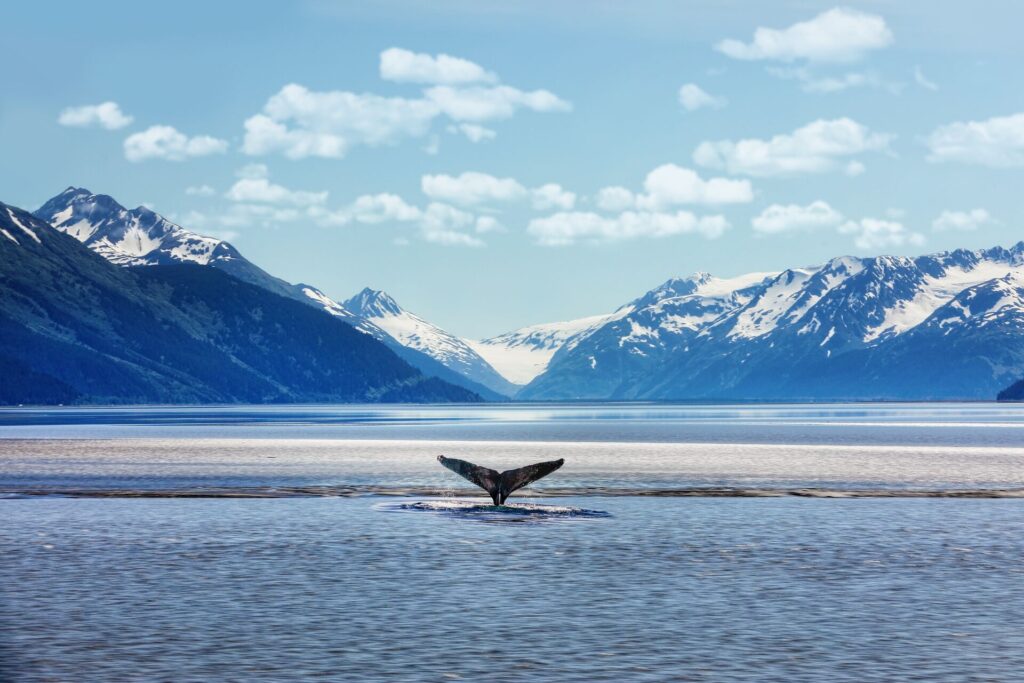

Best Alaska cruise itineraries by month
The best routes by month:
| Month | Best route | Why |
| April | Inside Passage | Mild weather, calm seas |
| May | Inside Passage or Gulf of Alaska | Start of cruising season, calmer conditions |
| June | All routes | Peak season, optimal weather and wildlife |
| July | All routes | Peak season, optimal weather and wildlife |
| August | All routes | High summer, great for glaciers and wildlife |
| September | Inside Passage or Gulf of Alaska | Fewer crowds, still good weather and wildlife |
| Early October | Inside Passage | Colder, quieter, season ends |
April and May: Inside Passage and Gulf of Alaska
- Some cruise lines will start up in April, although May marks the official start of the cruising season. One of the key advantages of cruising at this time is just how much quieter it is, so you can experience popular ports like Juneau, Ketchikan, and Skagway with fewer tourists. April offers cool conditions and in some areas like Glacier Bay, you may see sea ice; but outside of the protected Inside Passage, April’s weather is less favourable. By May, the Inside Passage remains ideal, although the Gulf of Alaska route becomes more clement as the month progresses.
- The cruises to choose: Adventure World’s 7-night Alaska Fjords & Glaciers cruise is the pick for April, journeying from Juneau to Ketchikan, exploring by small ship, kayak and skiff, and taking in the iconic Wrangell Narrows, Blashke Islands the Tongass backcountry, Endicott Arm Fjord, Walker Cove and the Dawes Glacier Wilderness Area. For May, HX’s 14-day Alaska and British Columbia – Wilderness, Glaciers and Culture voyage travels from Vancouver to Seward and then overland to Anchorage, immersing in glaciers, backcountry and First Nations cultures along the way.
June: All routes
- It’s peak season, so the weather is milder, and wildlife sightings are more common, and while the Inside Passage offers the calmest conditions, the Gulf of Alaska routes offer excellent views of the larger glaciers. The days are long, too, so there’s a lot more time to get off the ship for shore excursions and to soak up the buzz in the lively port cities.
- The cruise to choose: This extraordinary 14-night Authentic Alaska journey spends a week cruising aboard our plush small expedition ship for a MAKE TRAVEL MATTER® Experience, and then gives you another week exploring by rail, uncovering the very best of Alaska from bottom to top as it ventures from Juneau to Fairbanks via Icy Strait, Glacier Bay National Park, Chichagof Island, Frederick Sound, Anchorage, Denali National Park, and the Arctic Circle.
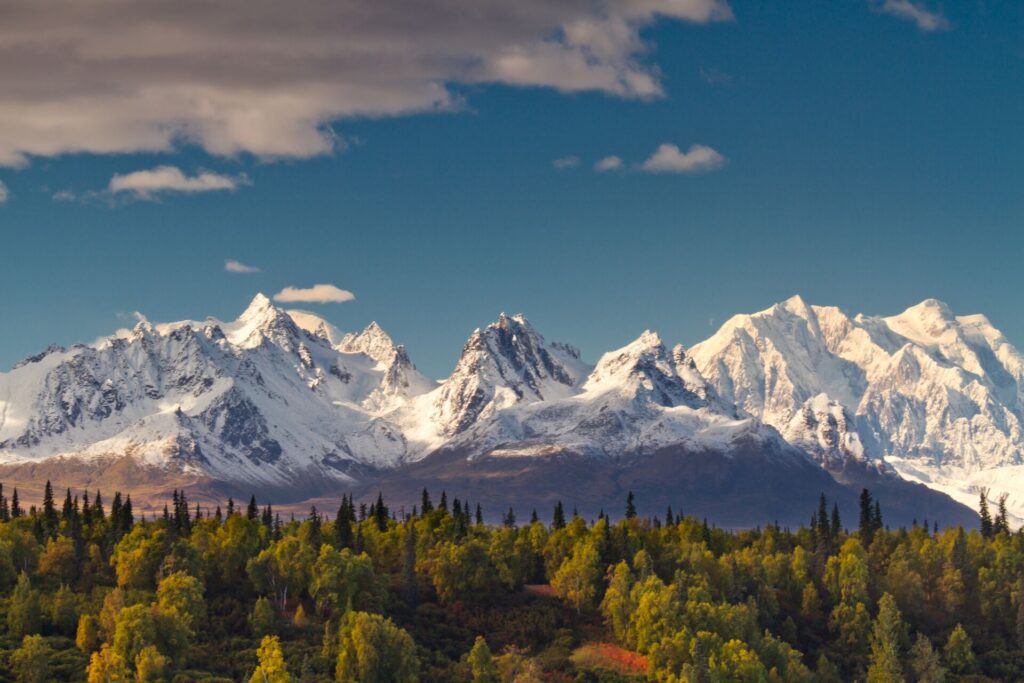

July: All routes
- While visitor numbers peak, summer’s relatively balmy conditions and long daylight hours are ideal for outdoor adventures, and while the Inside Passage remains mild, the Gulf of Alaksa is at its best if you’re keen to immerse in vast open-water views. This is also the prime time for wildlife: animals are at their most active, with bears fishing and foraging on land, and whales, orcas, seals, sealions and sea otters feasting in the nutrient-rich seas.
- The cruise to choose: The extraordinary seven-night Alaska Grizzly Encounter Kodiak to Katmai adventure includes four nights on an exclusive private charter cruise of Kodiak Island with just eight travellers on board and a bear-specialist naturalist. There’s also three nights on land to maximise your sightings as Alaskan brown bears fish, forage and frolic in their wild habitats.
August: All routes
- Temperatures remain comfortable, though a bit cooler than July, with up to 16-17 hours of daylight in many areas. It’s an excellent month for wildlife spotting, with the salmon run continuing to entice bears, eagles, and other predators, and whales fattening up ahead of their southbound migration.
- The cruise to choose: Lindblad Expeditions’ compact six-day Alaska Escape: Haines, the Inian Islands and Tracy Arm Fjord cruise journeys through the Inside Passage from Sitka to Juneau. Along the way you’ll explore Haines (aka the adventure capital of Alaska); kayak, Zodiac cruise or paddleboard along Chichagof Island; hike temperate rainforest, view the soaring glaciers up close, and learn about the wilderness from the small-ship’s naturalists.
September and early October: Inside Passage or Gulf of Alaska
- As the temperatures dip, and the season tapers off before finally ending, there are fewer tourists, so the cruise experience is generally more relaxed. The Inside Passage is still an excellent choice for calmer seas and landscapes awash with vivid autumn foliage. The Gulf of Alaska route also provides a serene, less crowded atmosphere, ideal for spotting wildlife, including salmon runs and bears. Plus, as the nights lengthen, there’s a chance to see the Northern Lights.
- The cruise to choose: The exceptional seven-night Northern Passages & Glacier Bay UnCruise journey has an unbeatable combination of activity and discovery, impeccable service and awe-inspiring encounters as you explore the Grand Pacific, Margerie, Lamplugh and Reid Glaciers in World Heritage Glacier Bay National Park, and beyond.
Keen to learn more about small-ship cruises with Lindblad Expeditions, UnCruise and HX? Give our Destination Experts a call on 1300 363 055 in Australia, 0800 238 368 in New Zealand or see our website.
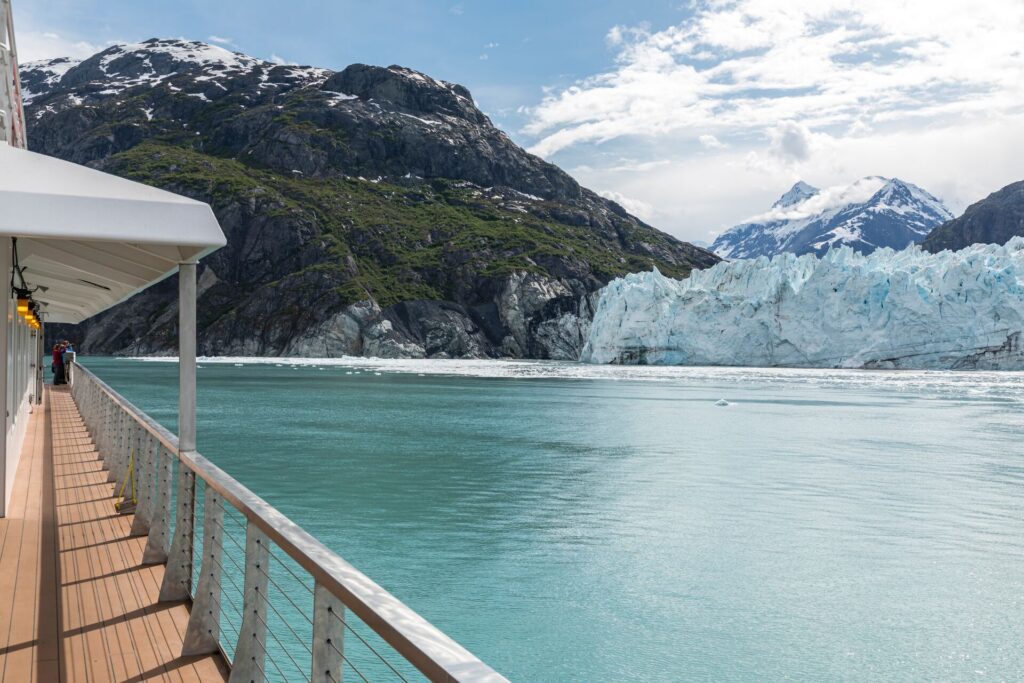

Planning your Alaska cruise
Here, three key factors to consider when choosing your voyage.
Small cruise ships vs large cruise ships
This is a matter of personal preference as both offer immersive journeys to Alaska but with distinctly different inclusions and amenities. Small expedition ships typically carry between 50 and 200 passengers, allowing for a more intimate and immersive journey, and as the vessels are comparatively more compact, they can access more remote locations, including narrow fjords, hidden coves, and less-visited ports, which larger ships cannot reach due to their size. The atmosphere on small ships is more personal; there’s opportunities for guided shore excursions, such as kayaking, wildlife watching, and hiking; the ships often carry their own zodiacs, kayaks and paddleboards for sightseeing, and there’s usually onboard naturalists and lecturers.
By comparison, larger ships can accommodate 1,000 to 5,000 passengers and have a broader range of amenities and entertainment options – like multiple restaurants, theatres, swimming pools and retail outlets – for a more traditional cruise experience.
The best shore excursions in Alaska
Whether you’re into cultural experiences, laidback sightseeing in grand-scale nature, or adrenaline-charged outdoor activities, Alaska has it all and more. For jaw-dropping views of glaciers, don’t miss Glacier Bay National Park, and get a kittiwake’s-eye view with a helicopter glacier tour from Juneau, Ketchikan or Skagway. You can also speed across the sky on North America’s longest zipline at Icy Strait. While ship-based exploring and sea kayaking may bring you close to whales (especially in Juneau, Ketchikan, Icy Strait Point), land-based bear viewing is outstanding in places like Kodiak and Katmai National Park. If you’d like to cover more ground, try a rail journey like the White Pass & Yukon Route Railroad (Skagway) and the Alaska Railroad (Anchorage, Denali). For cultural immersions, look out for Tlingit community experiences around Ketchikan and Icy Strait Point, and Russian heritage tours of Sitka. Keen to stretch your legs? Don’t miss the hiking trails of Denali National Park or the Misty Fjords Wilderness Walk.
How to find the best deals on Alaska cruises
Nabbing discounts on Alaska cruises requires luck, planning and flexibility, but here’s where to start:
- Book early, last-minute, or for the shoulder season. By booking six to 12 months in advance, you can secure the best cabins at the best prices; by booking late, you might get a bargain if the cruise line wants to fill any unsold cabins (and there are usually more of those in the shoulder season).
- Refer to the experts. Reputable travel companies like Adventure World make it their business to find the very best rates and are privy to exclusive promotions on Alaska cruises. Call our Destination Experts on 1300 363 055 in Australia or 0800 238 368 in New Zealand to discuss your needs and options.
- Travel with a group. Some cruise lines offer group discounts, onboard credits, or free cabins for group leaders, so it’s always worth asking if you’re eligible.
- Sign up to newsletters. If you’re on the mailing lists of your preferred travel companies, you may receive exclusive deals. Adventure World’s fortnightly newsletter is packed full of destination news, competitions and exclusive travel deals; sign up at the bottom of our home page.
- Stay abreast of special sales events like Black Friday and Cyber Monday, when many cruise lines and travel companies offer exclusive promotions.
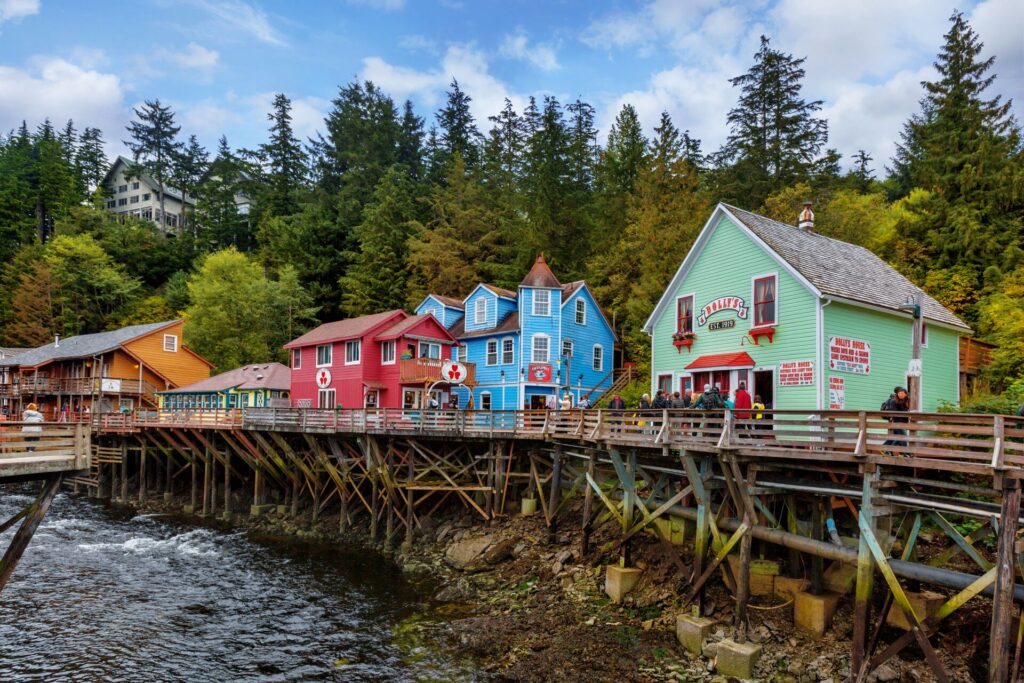

FAQs: Everything you need to know about cruising Alaska
How much does an Alaska cruise cost?
The cost of an Alaska cruise depends on your choice of vessel, itinerary, selected cabin class, when you book, and the season you travel. Bear in mind, most cruises will include meals, and some will also include shore excursions, Wi-Fi, and gratuities.
What should you pack for an Alaska Cruise?
Pack layers so you can adapt to varying temperatures, including a waterproof jacket, thermal layers, jumpers, and weatherproof pants. Waterproof hiking boots are also a good idea. Some small-ship expedition cruises will supply waterproof parkas and muck boots for shore excursions, so it’s worth asking when you book.
Which cruise lines offer the best Alaska cruises?
Our picks are UnCruise, Lindblad Expeditions and HX, as each of these small-ship expedition cruise lines offers outstanding onboard amenities, expert guides, impressive shore excursions and outdoor activities, and exceptional itineraries that take you deeper into the beating heart of the Alaskan wilderness.
Is an Inside Passage cruise or a Gulf of Alaska cruise better?
That depends on your preferences. An Inside Passage cruise offers calmer waters, charming ports and stunning coastal views, which all add up to a comparatively laidback experience. The Gulf of Alaska route is a little more adventurous as it covers more open waters and remoter coastlines.
What are the best ports to visit in Alaska?
Each Alaskan port offers something unique. Juneau is the state’s capital, and has excellent whale watching, handy access to the Mendenhall Glacier and the Mount Roberts Tramway for epic views of the city. Ketchikan is a great place to immerse in Native Alaskan culture, (don’t miss the Totem Bight State Park) and the Misty Fjords National Monument. Skagway delivers an intriguing immersion in Alaska’s frontier heritage, especially in the Gold Rush National Historical Park. On Baranof Island, Sitka blends Russian and Native Alaskan culture, while Icy Strait Point feels like an authentic slice of wildest Alaska while offering excellent community experiences with the Indigenous Tlingit people.
